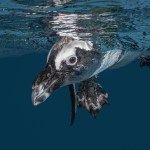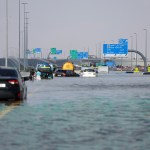Newsdeck
Europe launches fourth Earth monitoring satellite
Europe launched a fourth satellite Tuesday for its Copernicus Earth-monitoring project to track changes in forest cover and air pollution, the European Space Agency (ESA) announced.
The 1.1-tonne, “colour-vision” Sentinel-2B satellite blasted off on a Vega rocket from Europe’s space port in Kourou, French Guiana, overnight, and was successfully placed in Earth orbit, it said.
In about three days, controllers will start calibrating instruments to commission the satellite, which is to start operations in three to four months.
“With this launch we are taking another step toward advancing the Copernicus programme, which is the most sophisticated Earth observation system in the world,” ESA director general Jan Woerner said in a statement.
Two more satellites are to follow in the coming months.
Sentinel-SB, a twin of Sentinel-2A launched in June 2015, will zoom in on changes in the Earth’s land mass and coastal zones — forest cover and pollution in lakes and coastal waters, for example.
Between them, the Sentinel-2 pair will cover the Earth’s entire surface in five days. They are placed in the same orbit, on opposite sides of the planet, 180 degrees apart.
“Each Sentinel-2 satellite carries an innovative high-resolution multispectral camera with 13 spectral bands for a new perspective of land and vegetation,” the agency said.
“The combination of high-resolution, novel spectral capabilities, a field of vision covering 290 kilometres (180 miles) and frequent revisit times will provide unprecedented views of Earth.”
Sentinel-1A was launched in April 2014 and Sentinel-1B two years later. They are equipped with special cloud-penetrating radar with which to monitor Earth’s surface by day and by night, regardless of the weather.
Future satellites will focus on ocean data and Earth’s atmosphere.
By mapping areas stricken by flood or earthquake, Copernicus will also help emergency teams identify worst-hit areas and locate passable roads, railway lines and bridges.
Copernicus, a programme of the ESA and European Commission, is named for the 16th-century Polish astronomer who determined that the Earth orbited the Sun, and not the other way round, as convention had it at the time. DM


















 Become an Insider
Become an Insider